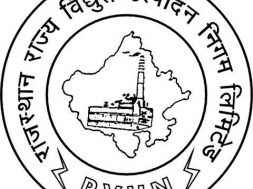
Indian solar projects hit as Chinese solar gear prices rise for the first time since 2017
Bengaluru : Prices of Chinese solar modules have increased for the rst time since 2017, making Indian developers apprehensive about returns on their projects because they import about 85% of the equipment from China.
Two unexpected events have led to the recent increase – an explosion and subsequent damage to the production line at GCL Poly, a Chinese giant that accounts for about 30% of the world’s poly-silicon production, and oods in
China’s southeast that forced temporary closure of another Chinese poly-silicon producing heavyweight, Tongwei.
These two developments disrupted the global solar module supply chain. The cost of a single multi-crystalline solar module has gone up to over $17 from $16-16.5. The price of a mono-crystalline module has risen to $18-19 from about $17.5, according to data from renewable energy consultancy rm, Bridge To India (BTI).
As a result, the equivalent tari impact on new projects is estimated at about Rs 0.07/kWH, BTI said. “This pricing is likely to remain the same for the next 16 to 18 months. Solar developers will see a signicant drop in their
returns,” said a developer.
“The problem is that the expectation over the past several years has been that of solar module prices progressively going down,” said an industry executive. “It’s going up or down relative to expectations.”
The executive implied that since all costs rise over the years, solar module prices were bound to eventually increase and those who bid for projects expecting the opposite were likely to be hit hard.
“If you’re very aggressive in your assumptions (while bidding), it’ll happen to you more frequently in future too,” the person said.
As a result, Chinese module suppliers are reneging on signed contracts unless higher prices are paid, according to people aware of the matter.
“Module suppliers are not being faithful to the contracts they’ve signed. They have also been losing money for the last few years, so if they see an opportunity to improve their pricing, there is pressure on them to capture that,” the person said.
Even long-time suppliers were being diicult.
“Agreements between module suppliers and developers do not depend on relationships,” said the executive. “They are
transactional. Modules are treated like a commodity.”
“Indian developers also do the same – this practice of renegotiation has been going on for the past ve years,” said
another industry insider.
The low taris in auctions over the past two months were not sustainable, experts said, all the more so with the latest
increase in module prices.
“Prices had fallen sharply temporarily because of huge oversupply post-Covid-19, with the manufacturers keen to clear out inventory at any cost. So, some rebalancing was anyway expected,” said Vinay Rustagi, managing director of BTI.
The developer said that since China is a “cartelised economy,” Indian developers have no choice but to pay a higher price. The supply chain is controlled almost entirely by China and Indian solar developers are left with no option but to buy from them, the person said.
“The industry is procuring modules from the Chinese because presently there is no other option. As domestic industry picks up within the next two years, we will shift to domestic procurement,” said Sunil Jain, CEO, Hero Future Energies















